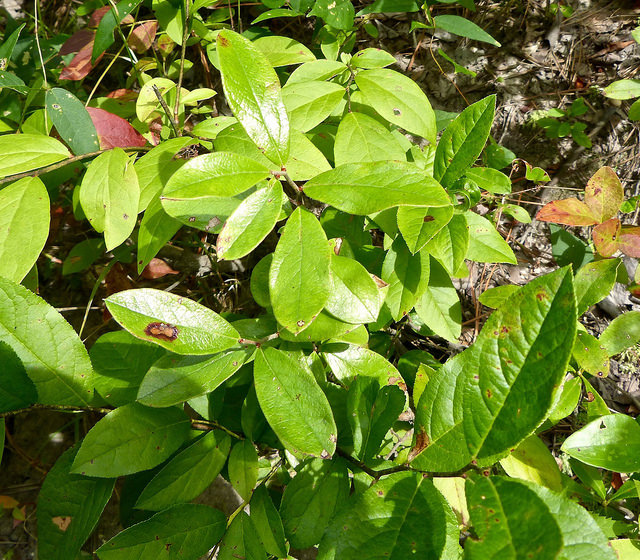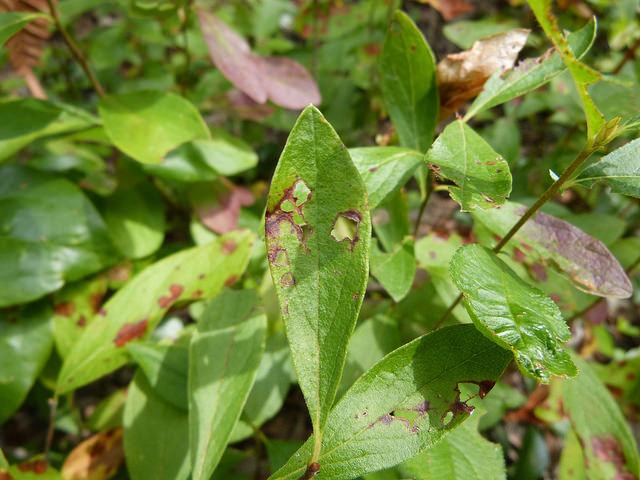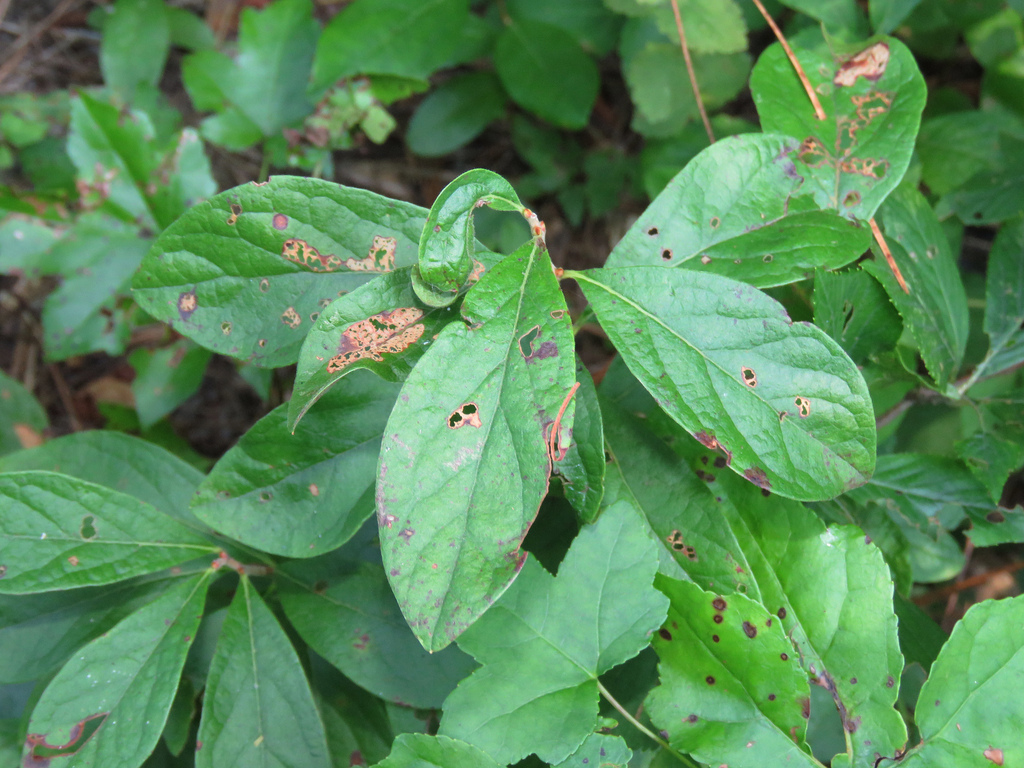Map Snapshot







28 Records
Status
Dwarf Huckleberry is a small shrub that is an endangered species in Maryland. The few populations occurring in the state are located along the Fall Line and the coastal plain. According to the Maryland Heritage Program, "[Dwarf Huckleberry is] endangered by habitat loss. The majority of our populations occurred historically in Fall Line seeps and stream-head fens in areas that are now heavily urbanized. The Baltimore and Anne Arundel County populations are historic and considered no longer extant."
Description
Like Black Huckleberry, Dwarf Huckleberry has resinous dots on both sides of the leaves. The easiest way to separate the two species is by the mucronate leaf tips of Dwarf Huckleberry. Flowers are bell-shaped and white to pink. Bloom time is May-June.
Where To Find
"Moist to dry, sandy soils of the Coastal Zone" (Brown and Brown, 1972).
Seasonality Snapshot
Source: Wikipedia
| Gaylussacia dumosa | |
|---|---|

| |
| Scientific classification | |
| Kingdom: | Plantae |
| Clade: | Tracheophytes |
| Clade: | Angiosperms |
| Clade: | Eudicots |
| Clade: | Asterids |
| Order: | Ericales |
| Family: | Ericaceae |
| Genus: | Gaylussacia |
| Species: | G. dumosa
|
| Binomial name | |
| Gaylussacia dumosa | |
| Synonyms[1] | |
| |
Gaylussacia dumosa is a species of flowering plant in the heath family known by the common names dwarf huckleberry, bush huckleberry, and gopherberry. It is native to eastern North America from Newfoundland to Louisiana and Florida.[2] It occurs along the coastal plain and in the mountains.[3]
This shrub branches from the base and grows erect to a maximum height around 75 centimeters (30 inches). It grows from a rhizome. The young twigs are coated in curly hairs. The deciduous leaves are oval, leathery, and glandular. The inflorescence is a raceme of bell-shaped flowers. The fruit is a berry. The plant reproduces by seed and by sprouting from the rhizome. It sprouts readily after episodes of wildfire.[3][4]
This plant grows in dry or moist habitat types. It can be found in forests, pine barrens, pine flatwoods, bogs, and bays. It grows alongside plants such as eastern red cedar (Juniperus virginiana), tamarack (Larix laricina), redbay (Persea borbonia), sweetbay (Magnolia virginiana), flowering dogwood (Cornus florida), dangleberry (Gaylussacia frondosa), yaupon (Ilex vomitoria), fetterbush (Leucothoe racemosa), and blueberry (Vaccinium spp.).[3]
The epithet 'dumosa' means bushy or shrubby. [5]
References
[edit]- ^ "Gaylussacia dumosa (Andrews) Torr. & A.Gray". The Plant List; Version 1. (published on the internet). Royal Botanic Gardens, Kew and Missouri Botanical Garden. 2010. Retrieved January 10, 2012.
- ^ Biota of North America Program 2014 county distribution map
- ^ a b c Coladonato, Milo 1992. Gaylussacia dumosa. In: Fire Effects Information System, [Online]. U.S. Department of Agriculture, Forest Service, Rocky Mountain Research Station, Fire Sciences Laboratory.
- ^ Flora of North America, Gaylussacia dumosa (Andrews) A. Gray, 1846. Dwarf huckleberry
- ^ Harrison, Lorraine (2012). RHS, Latin for Gardeners. Mitchell Beazley. ISBN 9781845337315.



